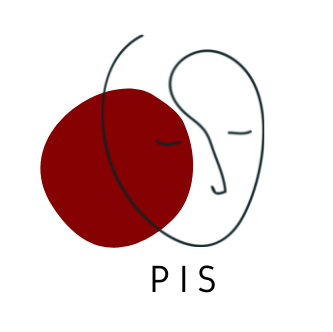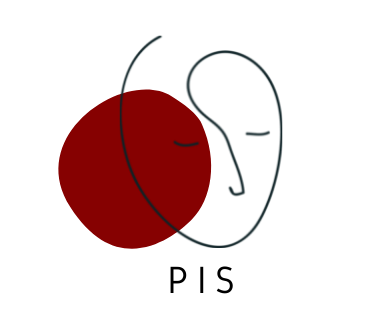The Return of Matter
Zaven Paré (Independent Scholar)
Presences in Search of Identities. From Robotics Experiments to Robot Drama
Teams Virtual Room – 15 February 2022, 17:00/19:00
Pietro Montani (La Sapienza, Roma)
Ambienti mediali e cultura materiale
Teams Virtual Room – 1 March 2022, 17:00/19:00
Silvia Casini (University of Aberdeen)
Giving Bodies back to Data: MRI Scanning, Data Visualization and Art-Science Collaboration in the Age of Operational Images
Martinetti room – 15 March 2022, 17:00/19:00
Ksenia Fedorova (University of Leiden)
The Sensing Self: Artistic Tactics of Sense Acts across and beyond the Bodily Boundaries
Martinetti room – 29 March 2022, 17:00/19:00
Lisa Cartwright and Scott McAvoy (University of California, San Diego)
Carapace: A Resilient Design Fable
Teams Virtual Room – 10 May 2022, 17:00/19:00
The Martinetti room is located in Via Festa del Perdono, 7, 20122 Milan.
All meetings will be held in mixed mode and can be followed through the link Teams:
https://tinyurl.com/y3uk6acc
SEE BELOW:
Presences in Search of Identities.
From Robotics Experiments to Robot Drama
Zaven Paré (Independent Scholar)

Abstract
My work consists in creating robot’s narratives, by inserting laboratory experiments into drama situations. This use of simulations helps understanding the potentialities of different relations between humans and technological devices or artificial creatures. Beyond the character effect, the reality effect or the presence effect, in order to provoke sympathy, and above all to arouse empathy, the interlocutors must be intelligent. I have tried to suggest it by inventing behaviors specific to robots, thanks to movements and sounds usually produced unconsciously by humans. With the simulation of micromovements and the production of robots’ involuntary sounds, besides the reinforcement of their presence effect, their interlocutors are able to give them a potential state of emotional consciousness, a kind of rudimentary identity.
Bio
Zaven Paré works as a researcher in addition to his artistic career. He is doing Machine Art and he is a Robot Drama Researcher. He invented the electronic marionette (Ballard Institute’s collections in Connecticut, also at the Musée d’Ethnographie in Neuchâtel and Marionettes Museums in France, Belgium, Italy and Russia), his devices staged the first Valère Novarina’s play in English in 1999 (CalArts, Henson Festival, La Mama e.t.c., Avignon Festival). He was a costume and a set designer for dance choreographers (Marie Chouinard, Edouard Lock), for theatre and musical theatre (Denis Marleau, Mauricio Kagel) and for ballet and opera (Het National Ballet, Opera Paris-Bastille). In 2009, he became a collaborator of the Robot Actors Project of Professor Hiroshi Ishiguro.in the Intelligent Robotics Laboratory at Osaka University. Some of his honors include French American Fund for Performing Arts Laureate at the California Institute for the Arts (CalArts), Villa Kujoyama Laureate, the Japan Society for Promotion of Science (JSPS) laureate and guest of honor of the last Moscow Puppet Festival. He is the author of L’âge d’or de la robotique Japonaise (Les Belles Lettres, Paris 2016), and more recently Le spectacle anthropomorphique, Entre les singes et les robots (Les Presses du Réel, Dijon 2021).
Suggested Reading
G. Agamben, Qu’est-ce qu’un dispositif?, Payot et Rivages, Paris 1998.
M. Akrich, Comment décrire des objets techniques, in “Techniques et Culture”, 9, 1987.
R. Barthes, L’Effet de réel, in “Littérature et réalité”, Seuil, Paris 1982.
M. Bateson, D. Nettle, G. Roberts, Cues of being watched enhance cooperation in a real-world setting, in “Biology Letters”, 2 (3), 2006, pp. 412-414.
P. L. Berger, T. Luckmann, The Social Construction of Reality, Anchor Books, Garden City 1966.
A. Berthoz, J-L. Petit, Phénoménologie et physiologie de l’action, Odile Jacob, Paris 2006.
R. L. Birdwhistell, et al., Proxemics [and comments and replies], in “Current anthropology”, 9 (2/3), 1968, pp. 83-108.
C. Breazeal, Designing sociable robots, MIT Press, Cambridge 2004.
R. A. Brooks, Intelligence without representation, in “Artificial Intelligence”, 47, 1991, pp. 139-159.
W. S. Condon, Synchrony units and the communicational hierarchy, Western Psychiatric Institute & Clinics, Pittsburgh 1963.
E. Di Paolo, O. Gapenne, J. Stewart, Enaction Toward a New Paradigm for Cognitive Science, MIT Press, Cambridge 2010.
P. Dubois, Y. Winkin, Rhétoriques du corps, De Boeck, Bruxelles 1988.
M. Elie, Aux origines de l’empathie, Ovadia, Paris 2009.
A. Gell, Art and Agency: An Anthropological Theory, Clarendon, Oxford 1998.
J. Gibson, “The Theory of Affordances”, in R. Shaw, J. Bransford (eds.) Perceiving, Acting, and Knowing: Toward an Ecological Psychology, Erlbaum, Hillsdale 1977.
E. Gofffman, Les cadres de l’expérience, Éditions de Minuit, Paris 1991.
J. Habermas, Théorie de l’agir communicationnel, Fayard, Paris 1987.
E. Husserl, L’idée de la Phénoménologie. Cinq leçons, PUF, Paris 2011.
L. Lavelle, La présence totale, Aubier, Paris 1934.
M. Merleau-Ponty, La Structure du comportement, PUF, Paris 1942.
A. Piette, Anthropologie existentiale, Éditions Pétra, Paris 2009.
M. Scheler, The Nature of Sympathy (1913), Archon Books, New York 1970.
G. Simondon, Du mode d’existence des objets techniques (1958), Aubier, Paris 2012.
E. Souriau, Les différents modes d’existence (1956), PUF, Paris 2009.
C. Stanislavski, La construction du personnage (1930), Pygmalion, Paris 1984.
Ambienti mediali e cultura materiale
Pietro Montani (La Sapienza, Roma)
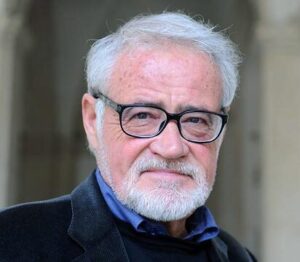
Abstract
Per certi aspetti “ambienti mediali” e “cultura materiale” sono sinonimi, nel senso che il vivente umano si caratterizza, in generale, per l’attitudine a sviluppare le sue forme di vita in un habitat strutturalmente caratterizzato dal tratto della mediazione. Ciò che si modifica in modo significativo nel corso del tempo, piuttosto, è l’area di intersezione che si stabilisce tra l’elemento materiale e quello culturale. Più precisamente: il materiale sembra lasciarsi permeare dalla medialità secondo proporzioni reciproche che sono spesso rilevanti. Nel mio intervento vorrei discutere, in particolare, delle modalità originali con cui oggi sembra lecito estendere il concetto di “material engagement” (Malafouris) riscontrandone alcuni specifici “spazi di gioco” (Benjamin) nelle pratiche espressive diffuse in rete. Senza trascurare la rilevanza specifica di queste pratiche nell’ambito dei “processi di individuazione” (Simondon).
Bio
Pietro Montani, filosofo, è Professore Onorario alla “Sapienza”, dove ha insegnato Estetica. È membro del progetto europeo The Future of Humanity: New Scenarios of Imagination (Vilnius University). È curatore dell’edizione italiana delle Opere scelte di S. M. Ejzenštejn (9 voll., Marsilio, Venezia 1981-2020). Il suo attuale campo di ricerca è costituito dall’influenza delle nuove tecnologie sulla sensibilità, l’immaginazione e i processi cognitivi. Tra i suoi ultimi libri: Tecnologie della sensibilità (Cortina, Milano 2014); Tre forme di creatività: tecnica, arte, politica (Cronopio, Napoli 2017); Emozioni dell’intelligenza. Un percorso nel sensorio digitale, (Meltemi, Milano 2020); L’immaginazione intermediale (Meltemi, Milano 2021); Destini tecnologici dell’immaginazione, (Mimesis, Milano 2022).
Suggested Reading
Per il concetto di “Material Engagement”: L. Malafouris, How Things Shape the Mind, MIT Press, Cambridge 2013.
Per il concetto di “spazio di gioco” riferito all’ambito della produzione tecnica di immagini: W. Benjamin, L’opera d’arte nell’epoca della sua riproducibilità tecnica, Donzelli, Roma 2019, in particolare la “Terza versione”.
Per il concetto di “individuazione”: G. Simondon, L’individuazione alla luce delle nozioni di forma e di informazione, Mimesis, Milano 2020.
Giving Bodies back to Data: MRI Scanning, Data Visualisation and Art-Science Collaboration in the Age of Operational Images
Silvia Casini (University of Aberdeen)
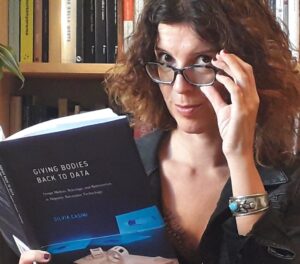
Abstract
Today, almost forty years after development of the world’s first clinical full body Magnetic Resonance Image scanner in John R. Mallard’s Aberdeen medical physics laboratory, biomedical images help interpret the clinical significance of biodata for patients all around the world. But what is it that the image-makers in Mallard’s lab first saw before a protocol solidified for generating images out of data, data from signal/noise, and interpretation of the data from the data-generated image? How do scientists visualise when an emerging image-generating technique is under development, when the protocol for image generation/data interpretation has not yet crystallised into a visual output? What do they see? And how is what they see reinvented? Drawing upon her recent book Giving Bodies back to Data (MIT Press, Cambridge 2021) Silvia Casini opens up the black box of Magnetic Resonance Imaging (MRI) technology emphasising the important but often overlooked roles played by aesthetics, imagination, and craft practice in medical visualisation.Combining history, laboratory ethnography, archival research, and collaborative art–science, Casini retrieves the multiple presences and agencies of bodies in data visualization, mapping the traces of scientists’ body work and embodied imagination in data visualisation. The talk is a call to both artists and scientists to remain or become a humanist in the technologically dense world of biomedicine and neuroscience which is increasingly characterised by operational images and machine vision.
Bio
Silvia Casini lectures in Visual Culture and Film at the University of Aberdeen and her courses are attended by students in the humanities as well as in medicine. Her work is situated at the crossroad of visual culture, science studies, and the medical humanities. She is the author of several articles on the aesthetic, epistemological and societal implications of scientific visualisation. Her work, which has been funded by the Carnegie Trust, the Leverhulme Trust and the AHRC, features in journals such as Configurations, Leonardo, Contemporary Aesthetics, Nuncius Journal of the Material and Visual History of Science, The Senses and Society. Among her most recent publications there are Giving Bodies back to Data. Image Makers, Bricolage, and Reinvention in Magnetic Resonance Technology” (MIT Press, Cambridge 2021) and “What counts as data and for whom? The role of the modest witness in art-science collaboration” in Routledge Handbook of Art, Science, and Technology Studies (Routledge, London 2021).
Suggested Reading
C. Coopmans, J. Vertesi, M. E. Lynch, and S. Woolgar, eds., Representation in Scientific Practice Revisited, MIT Press, Cambridge 2014.
D. Del Giudice, Atlante Occidentale, Einaudi, Torino 1985.
P. Galison, Image and Logic: Material Culture of Microphysics, Chicago UP, Chicago 1997.
A. Mol, The Body Multiple: Ontology in Medical Practice, Duke UP, Durham 2002.
K. Mondloch, A Capsule Aesthetic: Feminist Materialisms in New Media Art, Minnesota UP, 2018
A. Prasad, Making Images/Making Bodies: Visibilizing and Disciplining through Magnetic Resonance Imaging (MRI), in “Science, Technology, & Human Values” 30 (2), 2005, pp. 291–316.
H. J. Rheinberger, Infra-Experimentality: From Traces to Data, from Data to Patterning Facts, in “History of Science” 49 (3), 2011, pp. 337–348.
N. Rose, The Politics of Life Itself: Biomedicine, Power, and Subjectivity in the Twentieth-First Century, Princeton UP, Princeton 2007.
S. Turkle, Evocative Objects: Things We Think With, MIT Press, Cambridge 2007.
F. Vidal, Brainhood. Anthropological Figure of Modernity, in “History of the Human Sciences” 22 (1), 2009, pp. 5–36.
The Sensing Self: Artistic Tactics of Sense Acts across and beyond the Bodily Boundaries
Ksenia Fedorova (University of Leiden)

Abstract
The history of networked art (from telematic performances of the 1960s to works by Stelarc, Rafael Lozano-Hemmer, David Bowen and many others) offers a plethora of tactics to reveal the connections between the individual human and nonhuman entities. In today’s era of ubiquitous computing the discourse of remote sensing acquires new critical and political dimensions (e.g. in the work by Jenifer Gabrys). Yet, it is still important to see how the intensification of connectedness works at the phenomenological and aesthetic levels, namely in regard to the perception of the self and the boundaries of the self. I will analyze a number of artworks based on various sensing media in the context of the theories of distributed, situated and extended cognition in order to define features of proprioception characteristic to contemporary media determined world, discussing how the new technologies and collaboration with the ‘other-than-human’ reconfigure our experience of the self. Sensing will be approached as a specific kind of epistemic act that has a potential to produce effects.
Bio
Ksenia Fedorova (PhD, University of California, Davis) is Assistant Professor at Leiden University, NL. She is the author of Tactics of Interfacing: Encoding Affect in Art and Technology (MIT Press, Cambridge 2020) and the co-editor of Media: Between Magic and Technology (Armchair Scientist, Ekaterinburg-Moscow 2014, in Russian), her other publications appeared in Leonardo Electronic Almanac, Media & Culture Journal, Acoustic Space, Dialog of Arts. In 2007-2011, she led the “Art. Science. Technology” program at the Ural branch of the National Center for Contemporary Arts (Ekaterinburg, RU). Ksenia’s interests encompass media art theory and history, aesthetics, philosophy, science and technology and visual culture studies, with a focus on the effects of technologies on human perception and interaction.
Carapace: A Resilient Design Fable
Lisa Cartwright & Scott McAvoy (University of California, San Diego)
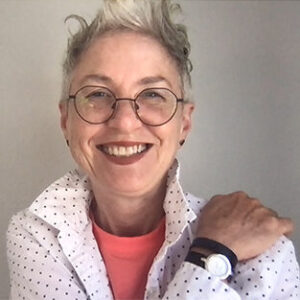
Abstract
This is a fable about the matter of the shell of a giant loggerhead sea turtle that lives at the Birch Aquarium at the Scripps Institution of Oceanography. The turtle was rescued, in 2013, from the cooling canal of a power plant in a city on the northeast coast of the United States. Among its injuries was a hole in the shell. The injured turtle was sent many places for care, but nobody was equipped to repair its shell. Finally it was sent across the country, to coastal California, where it received a host of kinds of care: medical, biosocial, oceanographic, and mediatized. This fable is a narrative of rescue, medical treatment, rehabilitation, restoration, and restraint. It is about the matter of resilience: how resilience is made on the backs of living bodies. The shell is a part of the turtle widely understood to be protective and resilient. Scientists, doctors, and imaging specialists worked together to make the turtle a plastic prosthetic. They used many methods and instruments: tomography, a 3D printing machine. Over time, the prosthetic was redesigned and replaced to keep up with changes in the turtle’s size and shape. The fable form is transhistorical, transcultural, and trans-species. It is a materially adaptive and resilient narrative form, morphing from speech to writing and image. This fable moves slowly and with deliberation, like the turtle itself. It plods over land and water, across crustacean geopolitics and hydropolitics, and between biomedicine and biomanufacture. To say this is a fable about a shell would not be quite right. This fable is only about the carapace, which is the dorsal or surface part. The underside, the plastron, completes the turtle’s black box. This is an ironic fable about the turtle as black box, and about the heroic efforts made by science and art to keep the lid on that box–to turn an Anthropocene story into a timeless fable about care and resilience.
Bio
Lisa Cartwright is Professor of Visual Arts, Communication and Science Studies and Director of the Art Practice PhD Program at the University of California, San Diego, where she is also on the faculty of the Design Lab and the programs in Film Studies and Critical Gender Studies. She is a historian of visual culture in art, media, technoscience, and biomedical imaging with a current focus on technology and design of instruments and power in wind and ocean science. As lead researcher on the Getty Pacific Standard Time Navigating the Pacific project, she works with 35 artists, scientists, and historians collaboratively tracking intersections of art and oceanographic and Indigenous science. She was a founding editorial collective member of the journal Catalyst: Feminism, Technoscience, Theory and the Femtechnet, a feminist network devoted to expanding digital pedagogy in feminist technoscience and media arts. Her books include Practices of Looking: An Introduction to Visual Culture (Oxford UP, Oxford 2001, co-authored with Marita Sturken), Moral Spectatorship (Duke UP, Durham 2008), and Screening the Body (Minnesota UP, Minneapolis 1995).
